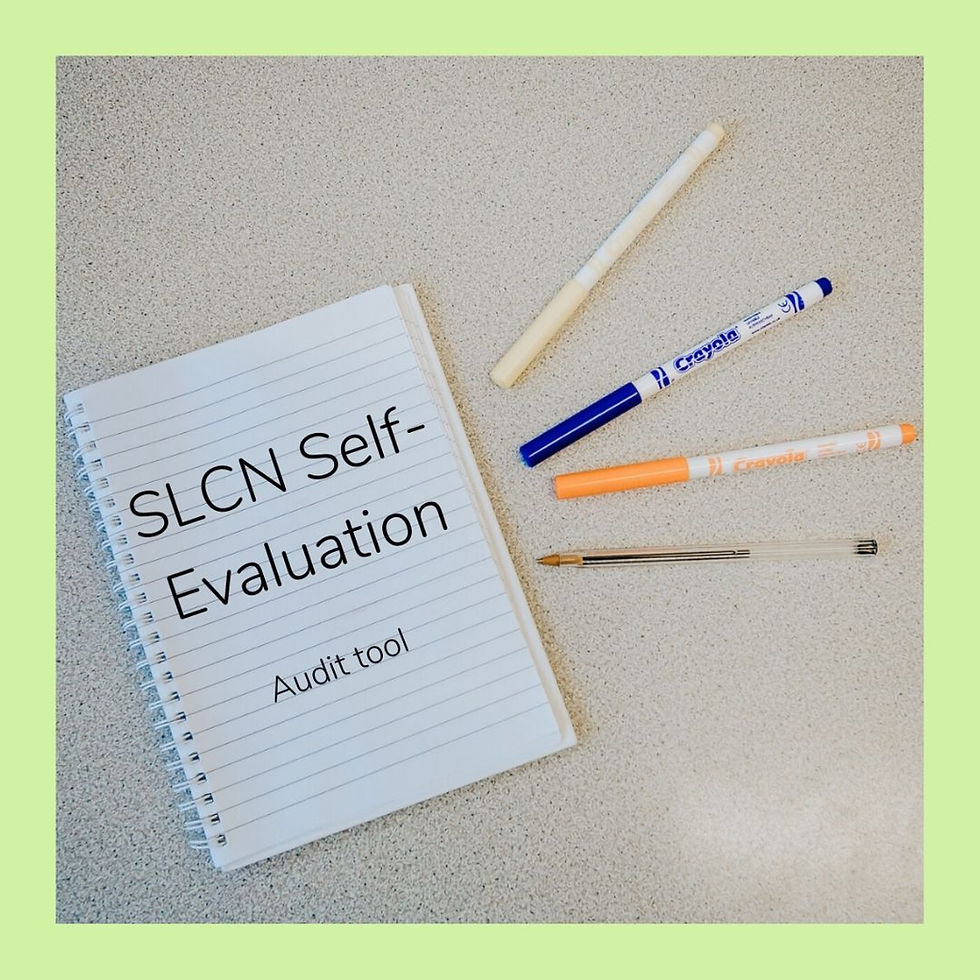How a SENCo developed a SLCN strategy for her whole school
- Beth Morrant

- Sep 15, 2020
- 3 min read
Updated: Aug 9, 2024

Rebecca is a SENCo who is looking to rejuvenate the SEN provision in her school with a view to providing quality data to the board of Governors and making sure all of the SEN provision is at a good to outstanding level before the impending Ofsted inspection.
She has her lists sorted: which children are on the SEN register, who has an EHCP, who has been seen by outside professionals (Educational Psychology, Speech & Language Therapy, Occupational Therapy, Physiotherapy, CAMHS, etc). Her paperwork and folders are organised and she has a good idea of the needs of the children.
There are Teaching Assistants in most classes and Rebecca needs to find a way to make sure the needs of the children are being met within the classroom through quality teaching or through TA-led interventions, or a combination of the two.
But she isn't sure of the skill level or confidence of the staff to work with SEN children.
She needs a way of making sure that the staff have an understanding of the difficulties and diagnoses of the children in their classes. She also wants to find out what resources and training options are available to support them. She has a limited budget and some old resources in a cupboard.
Here's what she did...
She downloaded the free Staff Skills Audit tool from the Speech & Language Garden, printed out enough copies for all of the staff and asked them to complete it in the first 5 minutes of their staff meeting.
It has yes/no statements for her colleagues to write their evidence next to and once her colleagues had filled out the 2-page form, Rebecca was able to collect the evidence that some members of her team had strengths and experience, while others needed further training.
A quick type-up of the results helped Rebecca to approach the senior leadership team of the school with data and evidence to show how fabulously she had started her new role and supported her request for a small amount of funding for staff training and resources.

My Schools Training Package was on her mind.
She can get her whole team signed up to it and they can access all of the online training and resources using their individual logins, this meant that the staff members could tailor their CPD to the needs of the children in their class.
Rebecca planed to use some of the training in the next staff meeting sessions that she was scheduled to lead, and also use the course for the Teaching staff at the next inset day. There would be no more prep required, all she had to do was play the videos.
There's so much information and super resources, Rebecca was planning to select the relevant ones for the children on her SEN register and SEND lists and:
Send the activity sheets home to share with parents
Print out and share strategy PDFs with the teachers of particular children to ensure quality teaching in the classroom
Include suggested strategies in the paperwork (One Plans and IEPs) for the children
‘borrow’ some of the strategies to upload to the SEND section of the school website
Rebecca had a plan for the SLCN checklist too. She was going to use it to assess some students of concern and see if the tool highlighted any areas of need for those individual children.
Following this she could indicate to the staff in that class the strategies from the training course which would work best for those children, and only refer on to Speech and Language the most concerning children as identified by the checklist.
Rebecca had a great plan and was off to a strong start in her new role, confident that she could improve the SEN provision in her school and excited to improve the skills of the whole team. She had very little to create by herself, just some printing and setting a date for the training to be delivered.

Are you a 'Rebecca'? New to your SENCo role or just want to plan something impactful for your school? If you feel like you could really do with a plan like Rebecca's or just want one of the SLCN resources, click on the images below.








